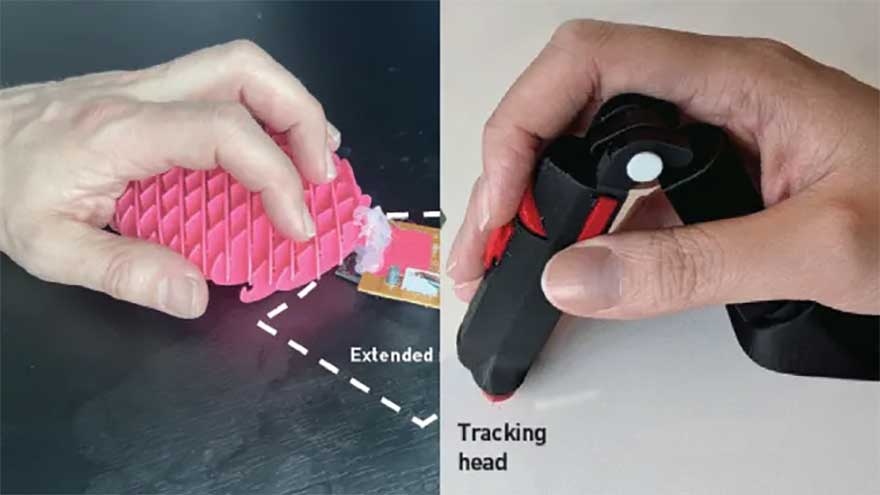Few gadgets are as iconic as the computer mouse, which has been a staple of the desktop PC since it emerged some 60 years ago.
The design has gone through various evolutions in the decades since, from trackball to laser and wired to wireless, as well as a variety of ergonomic redesigns to improve comfort and reduce the risk of wrist strain. Even so, the fundamental form-factor has remained largely recognizable — until now.
In a new study, researchers developed two prototype mouse designs that mark a more radical departure from the norm: one with a squeezable mesh body, and another with a hinged A-frame design that stands vertically.
Both are designed to reduce the wrist movements associated with repetitive strain injuries (RSI), which the researchers argued had not been solved by existing ergonomic designs such as slanted grips or trackballs that sit under the fingers.
“The main reason for this propagation of strain from the mouse hand to other parts of the body is that users frequently need to reposition (lift) the mouse several hundred times per hour, such as when trying to reach corners of the screen.
As every mouse user is familiar with, lifting the mouse requires moving the wrist and sometimes even the forearm,” the researchers wrote in a study published in the Sept.–Oct. 2025 issue of the journal ACM Interactions.
The researchers said that the prevailing cause of injury and discomfort when using mice is the fact that most designs still feature rigid outer shells.
The researchers’ first prototype, dubbed the Fleximouse, features a pliable mesh body that responds to being squeezed, meaning users can move the cursor by changing their grip instead of moving the device over a surface.
The A-frame design, meanwhile, was developed in collaboration with the Melbourne School of Design in Australia. It offers a more natural grip and is built with fewer moving parts — meaning it is less prone to wear. It also keeps the two bones in the forearm — the radius and the ulna — from being crossed all the time, as they are when the hand is lying flat, which the researchers identified as a leading cause of wrist strain.
The two designs were tested out by 28 students at KTH Royal Institute of Technology — many of whom were gamers and frequent mouse users. Of these users, 11 had previously reported chronic discomfort as a result of extended mouse use, while four had clinically diagnosed RSIs.







